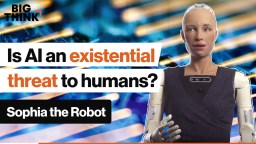ANDREW YANG: We've all deeply, deeply internalized the logic of the marketplace, which is that our value is reflected in our economic value. This is one reason why we have otherwise very, very smart well-intended people talking about how to turn coal miners into software coders. Why is it that we think that they must become software coders? It's because their earlier purpose in the market no longer exists, and so we have to find them a new one and being a software coder seems like something that the market wants. Now unfortunately the way that the market is evolving is that more and more of us are going to struggle to outcompete software, artificial intelligence, and robots more and more where robots are going to be to drive a car and a truck better than us very, very soon. AI can already outperform the smartest doctors at identifying tumors on a radiology film. AI can already surpass experienced corporate attorneys at editing documents and contracts. And so right now we're trapped in this mindset where we all have to find value based upon the market's estimation of what we can do. But the market's going to turn on more and more of us very, very quickly and has nothing to do with our merit. That radiologist went to school for a long time, but they just can't see shades of gray that the AI can. And the AI can reference millions of films whereas the radiologists can only reference thousands. And so we have to start evolving the way we think of ourselves and our value in this society.
If we rely upon the market, we're going to follow the market off a cliff because the market's going to turn on more and more of us over time, and we can already see that the market does not value many of the things that are core to human existence like caring, nurturing, and parenting and caregiving. And I use my wife as an example. My wife is at home with our two boys, one of whom is autistic. And the market values her contribution at zero whereas we all know that's nonsense and that her work is incredibly valuable and difficult. It's not just the caring and nurturing roles. It's also arts, creativity, journalism, increasingly, volunteering in the community. All of these things are getting valued at zero or near zero and declining. And so what we have to do, we have to say look, the market is not omniscient. The market's valuation of us and our activities and their value is something that we essentially invented. And we need to invent new ways to measure what we think is important. And I think that this is the most important challenge of our time because if we do not evolve in this direction, we're going to follow the market to a point that's going to destroy us where eventually AI is going to be able to outprogram our smartest software engineers. And then what will we ask people to do that has value? So we have to start getting ahead of this curve as fast as possible, and this is why I'm running for president.






